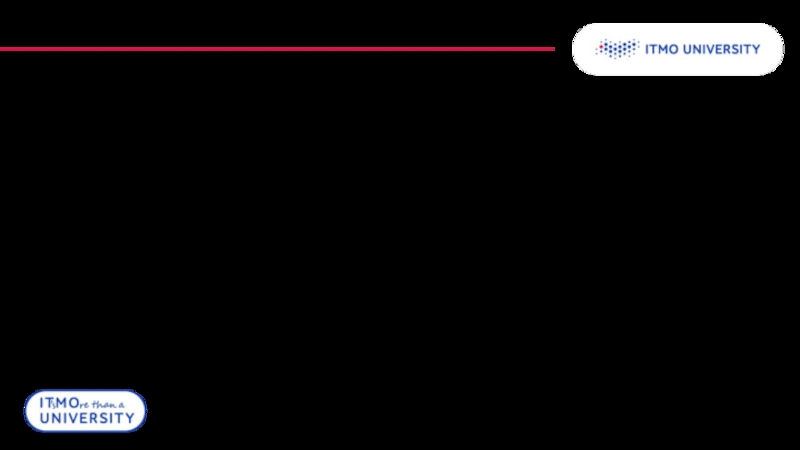- Главная
- Разное
- Дизайн
- Бизнес и предпринимательство
- Аналитика
- Образование
- Развлечения
- Красота и здоровье
- Финансы
- Государство
- Путешествия
- Спорт
- Недвижимость
- Армия
- Графика
- Культурология
- Еда и кулинария
- Лингвистика
- Английский язык
- Астрономия
- Алгебра
- Биология
- География
- Детские презентации
- Информатика
- История
- Литература
- Маркетинг
- Математика
- Медицина
- Менеджмент
- Музыка
- МХК
- Немецкий язык
- ОБЖ
- Обществознание
- Окружающий мир
- Педагогика
- Русский язык
- Технология
- Физика
- Философия
- Химия
- Шаблоны, картинки для презентаций
- Экология
- Экономика
- Юриспруденция
Hegel and dialectics doing in software engineering презентация
Содержание
- 1. Hegel and dialectics doing in software engineering
- 2. About myself Graduated in ITMO university 2009
- 3. Agenda What are complicated systems and where
- 4. Hegelian dialectics Dialectic or dialectics (Greek: διαλεκτική,
- 5. Hegelian dialectics concepts Hegelian dialectics is based
- 6. Grady Booch Grady Booch (born February 27,
- 7. Attributes of a Complex System Hierarchic Structure
- 8. Attributes of a Complex System Hierarchic Structure
- 9. Attributes of a Complex System Relative Primitives
- 10. Attributes of a Complex System Separation of
- 11. Attributes of a Complex System Common Patterns
- 12. Attributes of a Complex System Stable Intermediate
- 13. Evgeny Sedov Evgeny Alexandrovich Sedov (1929-1993) is
- 14. The law of hierarchical compensation by Sedov
- 15. How Complex Systems Fail?
- 16. Richard I. Cook, M.D. Physician, researcher, and
- 17. 1. Complex systems are intrinsically hazardous systems.
- 18. 2. Complex systems are heavily and successfully
- 19. 3. Catastrophe requires multiple failures – single
- 20. 4. Complex systems contain changing mixtures of
- 21. 5. Complex systems run in degraded mode.
- 22. 6. Catastrophe is always just around the
- 23. 7. Post-accident attribution accident to a ‘root
- 24. 8. Hindsight biases post-accident assessments of human
- 25. 9. Human operators have dual roles: as
- 26. 10. All practitioner actions are gambles.
- 27. 11. Actions at the sharp end resolve
- 28. 12. Human practitioners are the adaptable element
- 29. 13. Human expertise in complex systems is
- 30. 14. Change introduces new forms of failure.
- 31. 15. Views of ‘cause’ limit the effectiveness
- 32. 16. Safety is a characteristic of systems
- 33. 17. People continuously create safety. Failure free
- 34. 18. Failure free operations require experience with
- 35. Thank you! Questions? www.ifmo.ru
Слайд 2About myself
Graduated in ITMO university
2009 – Master
2012 – PhD
More
2006-2014 – Motorola (Mobility, Google, ARRIS)
2014 – short stop at Zodiac Interactive
2014-now – Oracle Inc, (Staring 2017 in California)
2006-now – teaching a University ITMO
Слайд 3Agenda
What are complicated systems and where they live
What Hegel and dialectics
Signs of complex systems by Grady Booch
Rule of “Hierarchical compensations” by Evgeny Sedov
How Complex Systems Fail?
Слайд 4Hegelian dialectics
Dialectic or dialectics (Greek: διαλεκτική, dialektikḗ), also known as the
Слайд 5Hegelian dialectics concepts
Hegelian dialectics is based upon four concepts:
Everything is transient
Everything is composed of contradictions (opposing forces).
Gradual changes lead to crises, turning points when one force overcomes its opponent force (quantitative change leads to qualitative change).
Change is helical (periodic without returning to the same position), not circular (negation of the negation).
The concept of dialectic (as a unity of opposites) existed in the philosophy of Heraclitus of Ephesus, who proposed that everything is in constant change, as a result of inner strife and opposition.
Слайд 6Grady Booch
Grady Booch (born February 27, 1955) is an American software
He is recognized internationally for his innovative work in software architecture, software engineering, and collaborative development environments.
Слайд 7Attributes of a Complex System
Hierarchic Structure
Relative Primitives
Separation of Concerns
Common Patterns
Stable Intermediate
Слайд 8Attributes of a Complex System
Hierarchic Structure
“All systems have subsystems and all
Слайд 9Attributes of a Complex System
Relative Primitives
“The choice of what components in
Слайд 10Attributes of a Complex System
Separation of Concerns
“Intracomponent linkages are generally stronger
Слайд 11Attributes of a Complex System
Common Patterns
“Hierarchic systems are usually composed of
Слайд 12Attributes of a Complex System
Stable Intermediate Forms
“A complex system that works
Слайд 13Evgeny Sedov
Evgeny Alexandrovich Sedov (1929-1993) is a Russian scientist, PhD (к.т.н.),
Supervised the development and implementation of many types of electronic control and monitoring devices and systems: in ultra-long-range hypersonic communications - space and terrestrial; in the automated control systems of production of blocks of devices of computer facilities and communications; in the development of the foundations of artificial intelligence.
Слайд 14The law of hierarchical compensation by Sedov
“The growth of diversity at
Слайд 16Richard I. Cook, M.D.
Physician, researcher, and educator Richard Cook is presently
Richard is an internationally recognized expert on safety, accidents, and human performance at the sharp end of complex, adaptive systems. His most often cited publication is “Going Solid: A Model of System Dynamics and Consequences for Patient Safety.”
Слайд 171. Complex systems are intrinsically hazardous systems.
All of the interesting
Слайд 182. Complex systems are heavily and successfully defended against failure.
The
Слайд 193. Catastrophe requires multiple failures – single point failures are not
The array of defenses works. System operations are generally successful. Overt catastrophic failure occurs when small, apparently innocuous failures join to create opportunity for a systemic accident. Each of these small failures is necessary to cause catastrophe but only the combination is sufficient to permit failure. Put another way, there are many more failure opportunities than overt system accidents. Most initial failure trajectories are blocked by designed system safety components. Trajectories that reach the operational level are mostly blocked, usually by practitioners.
Слайд 204. Complex systems contain changing mixtures of failures latent within them.
The complexity of these systems makes it impossible for them to run without multiple flaws being present. Because these are individually insufficient to cause failure they are regarded as minor factors during operations. Eradication of all latent failures is limited primarily by economic cost but also because it is difficult before the fact to see how such failures might contribute to an accident. The failures change constantly because of changing technology, work organization, and efforts to eradicate failures.
Слайд 215. Complex systems run in degraded mode.
A corollary to the
Слайд 226. Catastrophe is always just around the corner.
Complex systems possess
Слайд 237. Post-accident attribution accident to a ‘root cause’ is fundamentally wrong.
Because overt failure requires multiple faults, there is no isolated ‘cause’ of an accident. There are multiple contributors to accidents. Each of these is necessary insufficient in itself to create an accident. Only jointly are these causes sufficient to create an accident. Indeed, it is the linking of these causes together that creates the circumstances required for the accident. Thus, no isolation of the ‘root cause’ of an accident is possible. The evaluations based on such reasoning as ‘root cause’ do not reflect a technical understanding of the nature of failure but rather the social, cultural need to blame specific, localized forces or events for outcomes.
Слайд 248. Hindsight biases post-accident assessments of human performance.
Knowledge of the
Слайд 259. Human operators have dual roles: as producers & as defenders
The system practitioners operate the system in order to produce its desired product and also work to forestall accidents. This dynamic quality of system operation, the balancing of demands for production against the possibility of incipient failure is unavoidable. Outsiders rarely acknowledge the duality of this role. In non-accident filled times, the production role is emphasized. After accidents, the defense against failure role is emphasized. At either time, the outsider’s view misapprehends the operator’s constant, simultaneous engagement with both roles.
Слайд 2610. All practitioner actions are gambles.
After accidents, the overt failure
Слайд 2711. Actions at the sharp end resolve all ambiguity.
Organizations are
Слайд 2812. Human practitioners are the adaptable element of complex systems.
Practitioners
Restructuring the system in order to reduce exposure of vulnerable parts to failure.
Concentrating critical resources in areas of expected high demand.
Providing pathways for retreat or recovery from expected and unexpected faults.
Establishing means for early detection of changed system performance in order to allow graceful cutbacks in production or other means of increasing resiliency.
Слайд 2913. Human expertise in complex systems is constantly changing.
Complex systems
the need to use scarce expertise as a resource for the most difficult or demanding production needs and
(2) the need to develop expertise for future use
Слайд 3014. Change introduces new forms of failure.
The low rate of
Слайд 3115. Views of ‘cause’ limit the effectiveness of defenses against future
Post-accident remedies for “human error” are usually predicated on obstructing activities that can “cause” accidents. These end-of-the-chain measures do little to reduce the likelihood of further accidents. In fact that likelihood of an identical accident is already extraordinarily low because the pattern of latent failures changes constantly. Instead of increasing safety, post-accident remedies usually increase the coupling and complexity of the system.
Слайд 3216. Safety is a characteristic of systems and not of their
Safety is an emergent property of systems; it does not reside in a person, device or department of an organization or system. Safety cannot be purchased or manufactured; it is not a feature that is separate from the other components of the system. This means that safety cannot be manipulated like a feedstock or raw material. The state of safety in any system is always dynamic; continuous systemic change insures that hazard and its management are constantly changing.








































